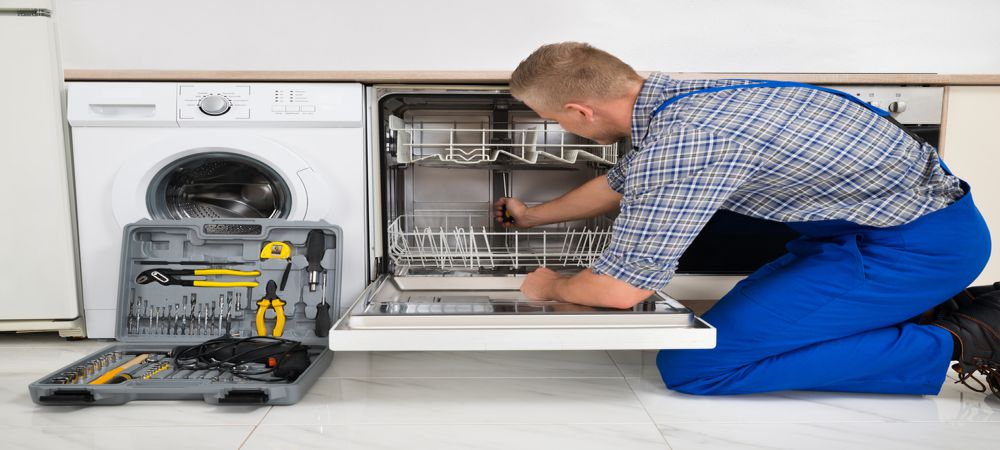The point of having a dishwasher is to lessen kitchen chores, thus giving you time to do other things or relax. After months or years of smooth operation, the thought of anything going wrong never occurs. Hence, seeing a puddle of water appear on the floor is more than enough to sour the mood. For one, there is the prospect of washing dirty dishes by hand if the leaking does not stop.
Find the Cause of Dishwasher Leaking and Fix
A leaking dishwasher is not uncommon, and it is one of the top issues encountered by repair technicians. Before calling for service, though, see if you can determine the cause and fix the leak yourself. Who knows, you might be loading the rack instead of wasting time waiting for help and spending money.
Important Reminders:
- Grab the user manual that came with your dishwasher. If you no longer have a copy, you can find a pdf copy from the manufacturer’s website. Most, if not all of the major brands, would have made pdf copies available.
- Shut off the water supply. You should find the valve under the kitchen sink.
- Do not forget to unplug the appliance. For good measure, you can even turn the circuit breaker off. As you are well aware, water and electricity are a bad combination.
I. Dishwasher Door Gasket Not Sealing Properly
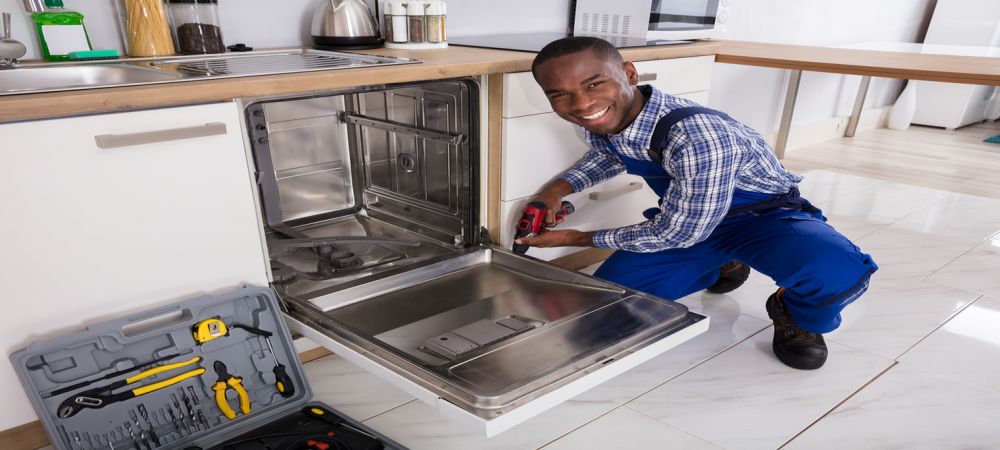
The door seal, made usually of either soft rubber or vinyl, creates a watertight seal. At the bottom corners of the door, your dishwasher may also have rubber baffles that stop water from leaking. Over time, these materials deteriorate, becoming less flexible or brittle, and prone to damage.
If you notice water leaking from the sides of the dishwasher, open the dishwasher door to visually inspect the door seal for signs of damage. You can also run your finger along the door gasket to feel for cracks or missing pieces. Make sure there is no dried food material sticking to the rubber seal, too.
Fixing a leaky dishwasher caused by a damaged gasket or baffles is easy. Consult the user manual for reference on replacement parts, which you can order from a local dealer or the manufacturer.
How to replace the door seal:
- Once you have the replacement door gasket ready, remove the old one from the door by peeling it off.
- Use warm, soapy water to clean the channel around the dishwasher door.
- Using a hairdryer, warm up the new door gasket using low heat to smoothen folds and to make the material more pliable.
- Place the center of the door gasket on the top of the door.
- Press evenly across the top and then down on both sides.
- Open and close the dishwasher door a few times to push the door seal securely into the door channel.
II. Defective Dispensers and Grommets
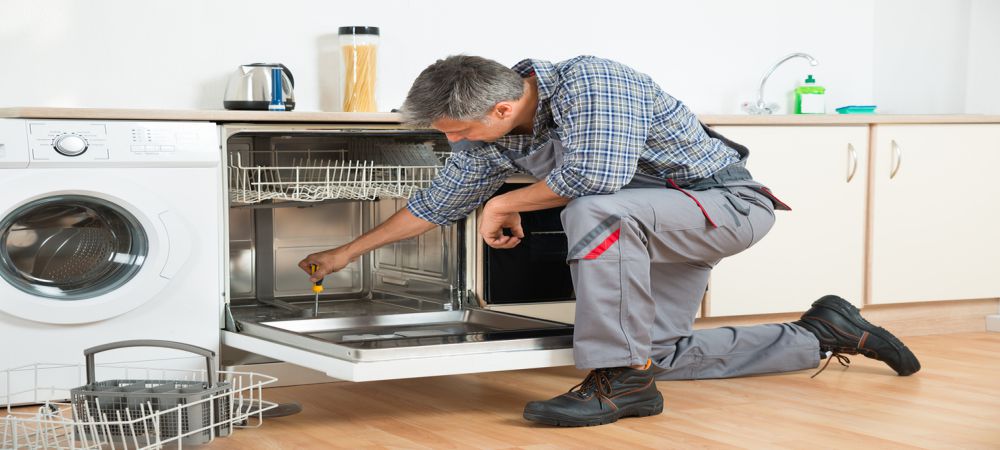
Dishwashers have two kinds of dispensers located on the inner door panel. One is the rinse dispenser. The other is the detergent dispenser, which may be attached screw and gasket or molded into the door panel. The latter would also have a dispenser latch assembly attached to the back of the inner panel. In this case, it would also have a rubber grommet for a watertight seal.
If you notice water leaking from the front of the dishwasher, the cause could be the gasket or grommet – depending on which model you have.
How to inspect and replace the dispenser gasket or grommet:
- Unplugging the appliance is a must before troubleshooting or attempting to fix a problem. If you have not done so, now is a good time.
- Open the dishwasher door and inspect the dispensers. See if there is anything broken that prevents the dispensers from functioning.
- If there are damages, replacing is straightforward once you have the replacement parts from a dealer or the dishwasher manufacturer.
Related article: 7 Reasons Your Dishwasher Is Leaking
III. Faulty Spray Arm
Dishwashers have a spray arm at the bottom of the interior. Some models may even have one more – a middle or an upper spray arm – beneath the top dish rack or on top of the tub. A pump forces water and dishwasher detergent to come off the spray arms, directed around the washing chamber.
Most brands use plastic parts, which can warp or crack. Some others use metal, which may separate at the seams. At any rate, any damage sustained causes an alteration in the spray pattern. Besides lowering the washing and cleaning efficiency, a faulty arm may spray water directed at the bottom of the door. Because the dishwasher door does not have a gasket, it may be why the dishwasher leaks.
How to inspect the dishwasher spray arm:
- Open the dishwasher door and locate the spray arm, making sure it has not dislodged accidentally.
- Inspect visually for obstructions and signs of wear and tear, such as cracks.
- Spin the arm manually to see if it rotates freely. It should not be wobbly, have a strong resistance, or hit the dish rack.
- Check the holes on the arm to make sure there is no blockage.
Note: You can remove the spray arm by turning it counter-clockwise. This way, you can better inspect for any signs of damage or obstruction.
If there are signs of damage, order a replacement part from the manufacturer or one of their dealers.
How to replace the spray arm:
- Unscrew the arm by turning it counter-clockwise.
- Line the center hub of the new spray arm and screw it in by turning clockwise.
IV. Damaged or Loose Hose
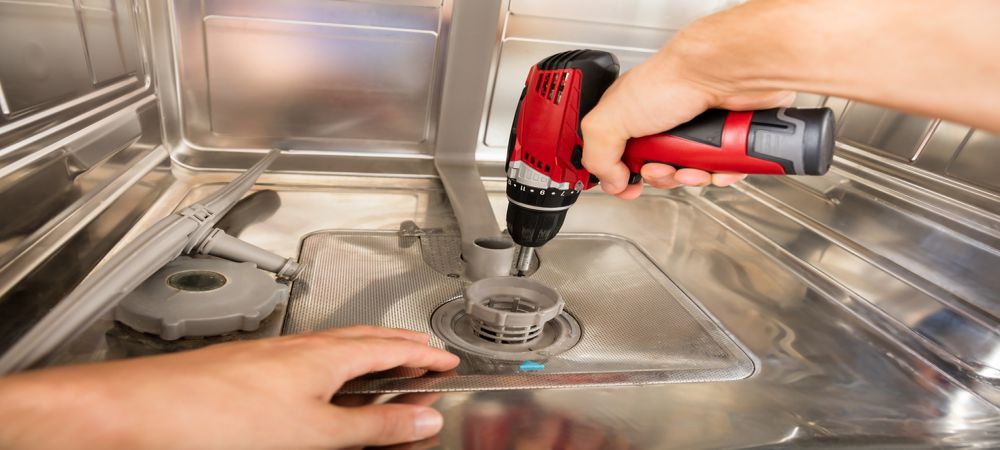
Another cause of dishwasher leaking water is a loose or cracked drain hose or recirculation hose. You cannot see both types of water hose unless you remove the access panel (kick plate panel) at the bottom.
How to check the dishwasher hoses:
- Before troubleshooting the leaking dishwasher, you should disconnect both the water and power source.
- Remove the access panel.
- Inspect both hoses – drain and recirculating – for signs of wear and tear.
- You can also detach the hoses to run water through to see if there is a blockage.
- If you see loose hose clamps, fix it – this might be the cause of the leaking dishwasher.
Consult the user manual for reference on replacement hoses, which you can order from a local dealer or the manufacturer.
How to replace the drain hose:
- Detach the hose by pinching on the hose clamp to remove.
- Connect the new hose, and secure the hose clamps.
V. Float Switch Fails to Cut Off Water
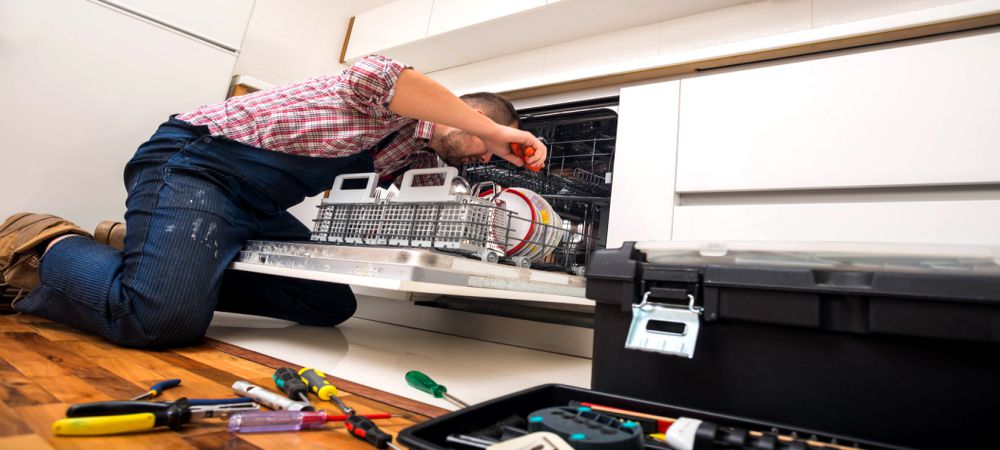
Dishwashers have a float assembly located at the bottom of the tub, near the heating element. As the water level rises, the float also rises. Upon reaching the proper level, a stem activates the switch, which then turns off the inlet valve. If any of these components fail, the water may rise too high, making the dishwasher leak water.
One way to determine if something is wrong with the float switch is to open the door during mid-cycle. At this point, the water level should be below the heating element. If it is over, then you will want to test the switch.
How to test the float switch using a multimeter:
- Do not forget to disconnect the dishwasher from the power source to avoid electrical shock.
- Unscrew the access panel and find the float assembly. You should see the switch directly beneath.
- Remove the float switch, or disconnect all wires.
- Set the multimeter to Rx1, then test the terminals of the switch for continuity. The reading should be infinity or zero.
- Keep the probes on the terminal and press the button of the switch. If there is no damage, the reading should change to the opposite extreme – from infinity to zero or zero to infinity.
If the float switch is faulty, consult the manual to see if there is a part number for the replacement. A local dealer should be able to help you or order a new one from the manufacturer.
How to replace the float switch:
- Having already accessed the float switch, remove it by unclipping or unscrewing – if you have not yet done so.
- Secure the new float switch and reattach the wires.
VI. Faulty Water Inlet Valve
The water from the supply line passes through an inlet valve to the dishwasher. If it fails to open and close properly, then you may have found the cause of why your dishwasher is leaking.
To determine if the water inlet valve is defective, open the door when the dishwasher is in the middle of a wash cycle. If the water continues to fill, the water inlet valve is likely damaged.
Since you already suspect that it is the cause, you might as well locate and inspect it for signs of damage.
After removing the access panel, you should see the water inlet valve. It is referred to as a solenoid valve because of the electrical components that open and close the valve. Moreover, it can have one or two solenoids, each having two wires.
A damaged solenoid valve, unfortunately, is beyond fixing. You would need to check the manual for part number and order a replacement from a dealer or the manufacturer.
How to replace the water inlet valve:
- Be sure to disconnect the dishwasher from the power source.
- Remove the access panel at the bottom of the dishwasher, and unscrew or release the clamps to detach the hose.
- Disconnect the water inlet valve carefully. Make sure you label each wire for easier connection to the replacement valve.
- Replace the old valve with the new water inlet valve, and connect the electrical wires and hose.
VII. Defective Dishwasher Pump
A failing water pump may be the reason why your dishwasher is leaking. All dishwashers have a pump that circulates water. Some models also use a pump to drain water.
Found inside the pump housing are two compartments. One is the circulation part that consists of a wash impeller and filter components. Another is the drain part, which has a drain impeller and chopper blade.
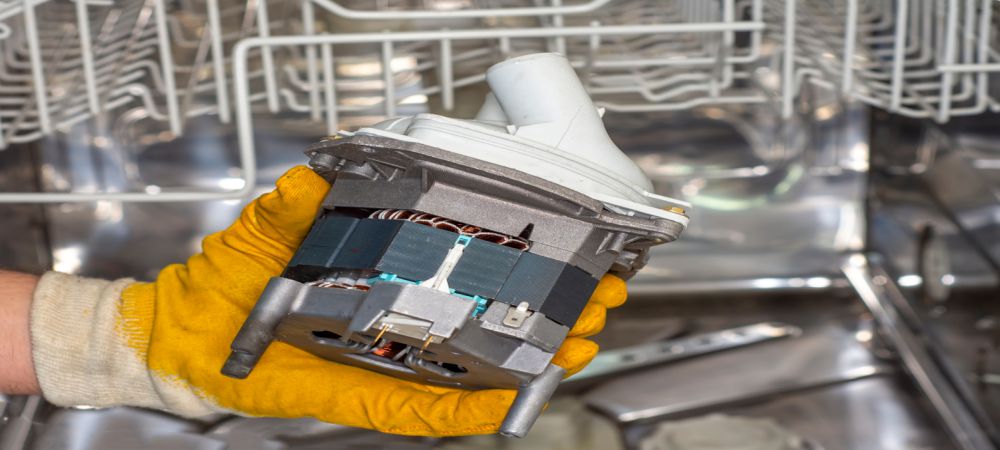
How to test the dishwasher pump using a multimeter:
- Make sure you disconnect the dishwasher from the power source.
- Locate the water pump. For most dishwasher brands and models, it should be behind the lower access panel. Consult the manual if you are unsure.
- Set the multimeter to Rx1 and test for continuity. Making sure that the probes touch the terminals, you should have a reading of zero or near zero.
- Check the ground connection by keeping one probe on a terminal, and touch the bare metal pump housing with the other probe. You should not get any reading at all.
- If the results are not as expected, then you or an appliance repair technician need to replace the pump.
Call the best appliance repair company, Prime Appliance Repairs today!





